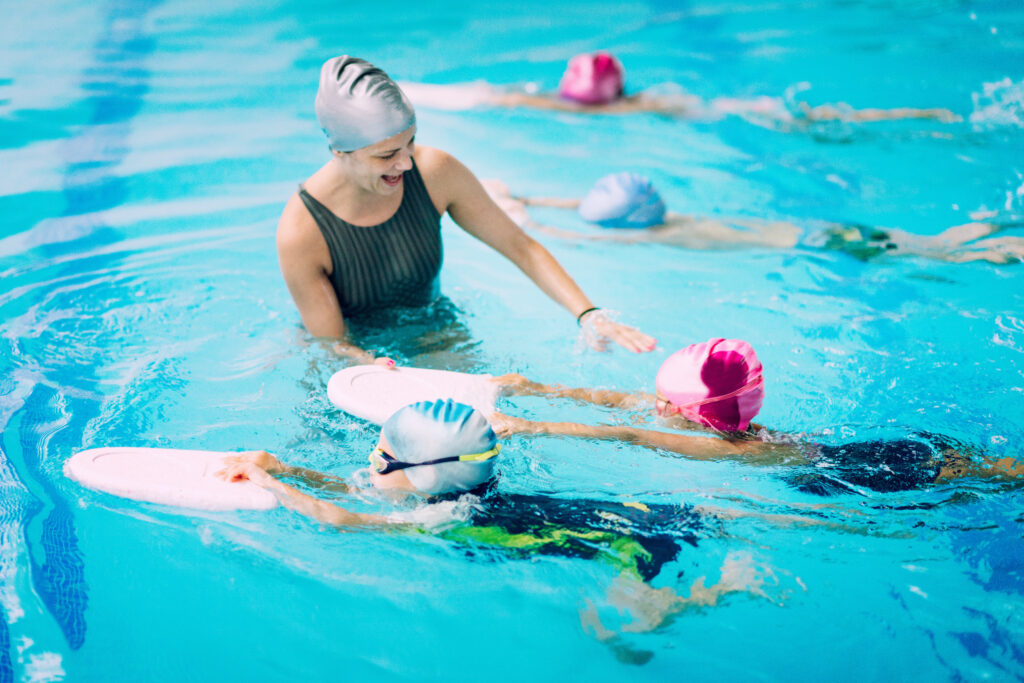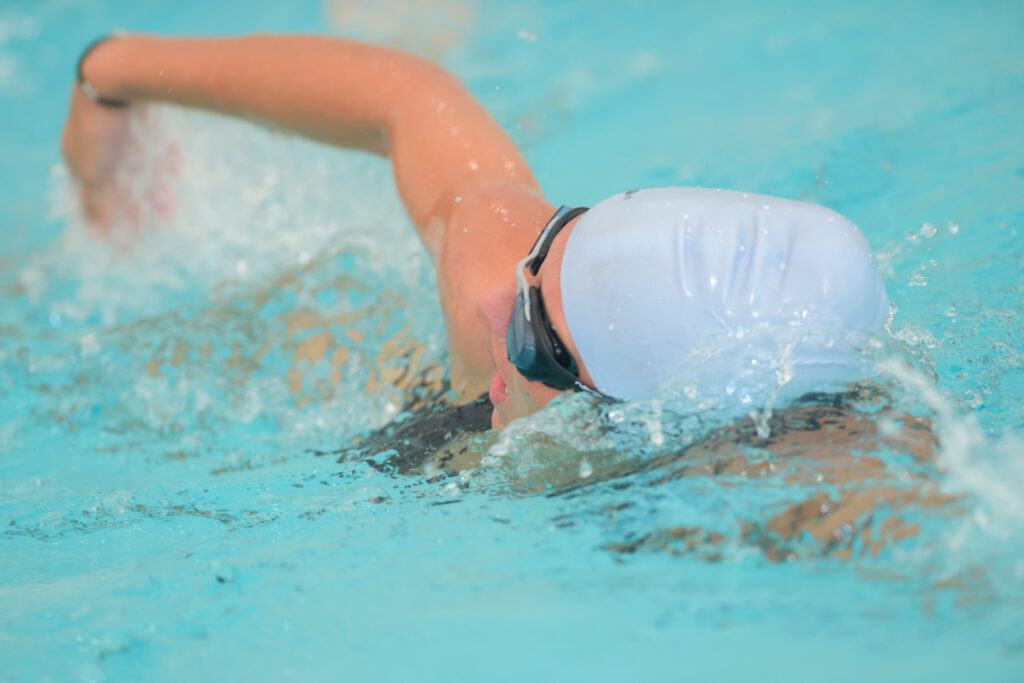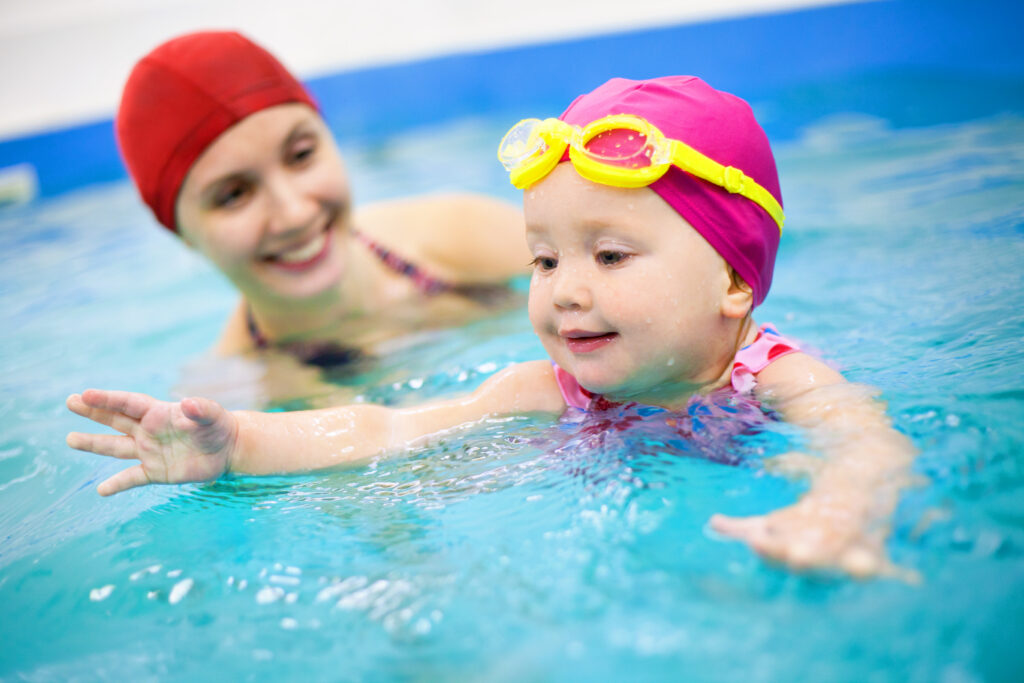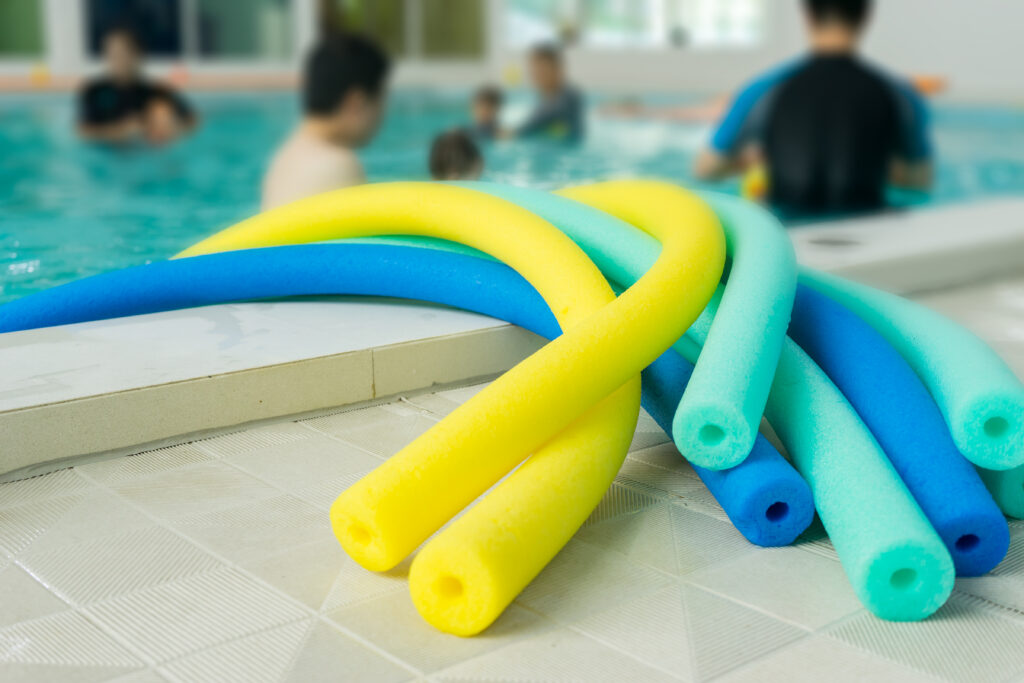Swimming is a valuable life skill that can improve physical fitness, mental wellbeing, and safety in and around water. Despite being a mandatory part of the national curriculum in England for 25 years, research has consistently shown that only half of primary school pupils meet the required standards. This raises questions about whether swimming should be a bigger part of the national curriculum in the UK and how it compares to other countries.
A comparative analysis of other countries shows that some have a more comprehensive approach to teaching swimming and water safety in schools. For example, in Australia, swimming and water safety are considered essential life skills and are included in the national curriculum from primary school to high school. In the United States, most states require schools to provide swimming lessons, and in some cases, students must pass a swim test to graduate from high school. In contrast, the UK’s approach to swimming education is less structured and relies heavily on external providers.
Key Takeaways
- Despite being mandatory for 25 years, only half of primary school pupils in the UK meet the required swimming standards.
- Other countries such as Australia and the United States have more comprehensive approaches to teaching swimming and water safety in schools.
- Increasing swimming in the national curriculum in the UK could improve physical fitness, mental wellbeing, and safety in and around water.
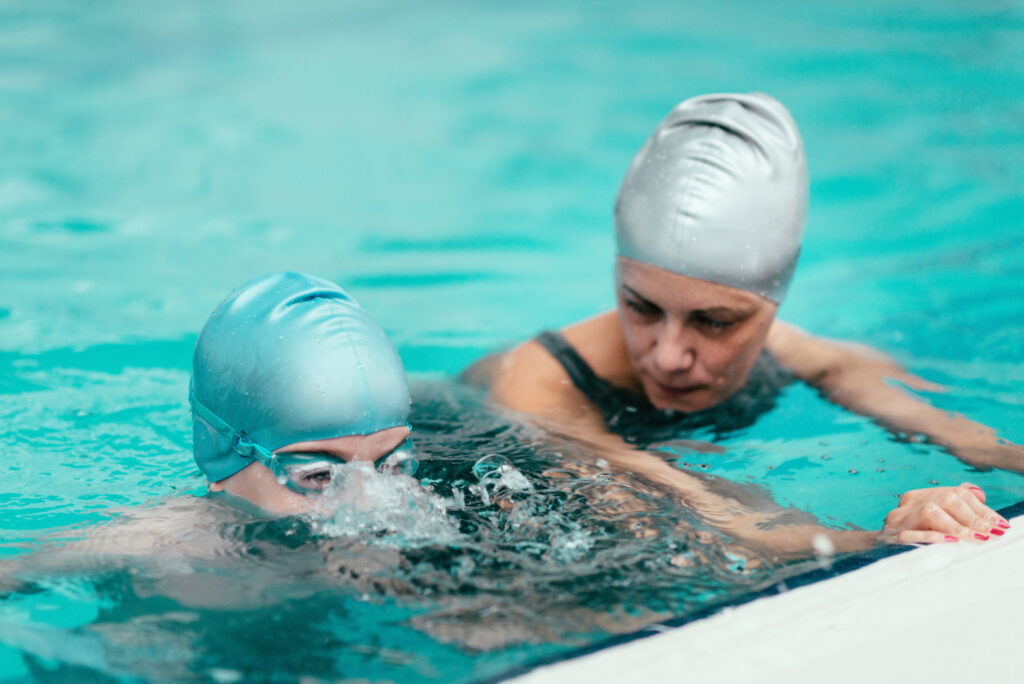
The Current State of Swimming in the UK National Curriculum
Importance of Swimming
Swimming is an essential life skill that can save lives and prevent drowning accidents. It is also an excellent form of exercise that promotes physical fitness, mental wellbeing, and social interaction. Swimming is a low-impact activity that is suitable for people of all ages, abilities, and backgrounds. It can improve cardiovascular health, respiratory function, muscular strength, and flexibility. Swimming can also boost confidence, self-esteem, and teamwork skills. Therefore, it is crucial that swimming is included in the national curriculum of the UK.
Current Inclusion in Curriculum
According to the Swim England, since 2012, the UK government has required primary schools to provide swimming and water safety lessons to all pupils in Key Stage 1 and Key Stage 2. The national curriculum states that by the end of Key Stage 2, all children should be able to swim a minimum distance of 25 metres unaided and use a range of strokes effectively. However, a recent report by Swim England revealed that only 50.6% of primary school children in England achieved this standard in 2019-2020, which is a decline from 51.2% in 2018-2019. The report also found that 20.7% of primary schools did not provide swimming lessons to their pupils, and 36.7% of primary schools did not offer water safety education.
The report suggests that the lack of funding, resources, and expertise is the main barrier to achieving the national curriculum requirements for swimming and water safety. The report calls for the government to increase investment in school swimming, improve teacher training and qualifications, and raise awareness of the benefits of swimming and water safety. The report also recommends that the government should monitor and evaluate the quality and effectiveness of school swimming provision regularly.
Compared to other countries, the UK lags behind in terms of swimming proficiency among children. For example, in Australia, all children are required to learn to swim as part of the national curriculum, and swimming is a compulsory subject in primary schools. In Finland, swimming is also a mandatory subject in primary schools, and all children must pass a swimming test before graduating from primary school. In the Netherlands, swimming is a popular extracurricular activity, and most children learn to swim before they start primary school. Therefore, the UK should learn from these countries and prioritize swimming education in the national curriculum.
Comparative Analysis of Other Countries
When it comes to swimming in the national curriculum, the UK is not alone in its approach. Let’s take a look at how some other countries have incorporated swimming into their education systems.
Swimming in Australia’s Curriculum
Australia is known for its beach culture, and it’s no surprise that swimming is a key part of their national curriculum. The Australian Curriculum, Assessment and Reporting Authority (ACARA) states that every student should have the opportunity to learn to swim and develop water safety skills.
In the primary years, students are expected to participate in swimming and water safety programs, with the aim of achieving a level of proficiency that enables them to be safe in and around water. In the secondary years, swimming and water safety programs are available as elective subjects.
Swimming in the USA’s Curriculum
In the USA, swimming is not a mandatory part of the national curriculum. However, many schools offer swimming programs as part of their physical education curriculum. The National Standards for Physical Education state that students should be able to “demonstrate competency in a variety of motor skills and movement patterns” including swimming.
Some states have also implemented their own requirements for swimming education. For example, California requires that all students in grades 1-6 receive swimming instruction.
Overall, it’s clear that swimming education varies from country to country. While some, like Australia, have made it a mandatory part of their curriculum, others, like the USA, have left it up to individual schools to decide.
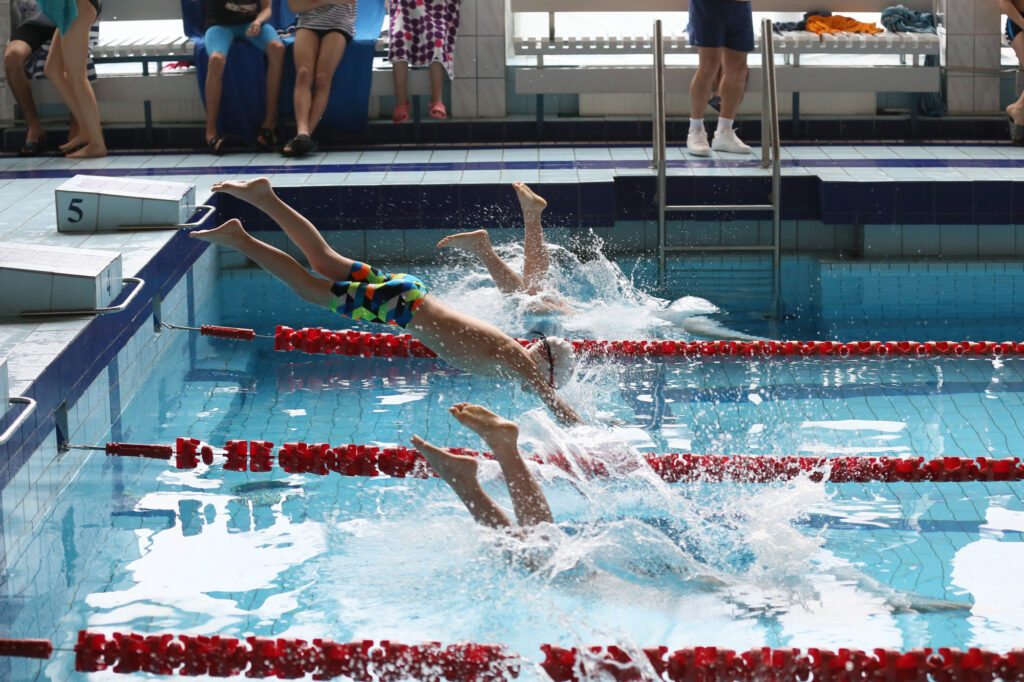
Advantages of Increasing Swimming in Curriculum
Swimming is a valuable skill that has numerous benefits for children. Incorporating swimming as a bigger part of the national curriculum in the UK can bring about several advantages. Here are some of the benefits of increasing swimming in the curriculum:
Improvement in Physical Health
Swimming is a great form of exercise that can improve the physical health of children. It is a low-impact activity that can help improve cardiovascular fitness, muscle strength, and flexibility. Swimming can also help children maintain a healthy weight and reduce the risk of obesity and related health problems. By increasing swimming in the curriculum, we can encourage children to be more active and lead a healthier lifestyle.
Enhancement of Mental Well-being
Swimming can have a positive impact on mental well-being. It can help reduce stress, anxiety, and depression. Swimming also releases endorphins, which can improve mood and promote a sense of well-being. By incorporating swimming in the curriculum, we can provide children with a fun and relaxing activity that can help improve their mental health.
Development of Life-Saving Skills
Swimming is an essential life skill that can save lives. By increasing swimming in the curriculum, we can help children develop the necessary skills to be safe in and around water. This can include learning how to swim, how to perform basic water rescue techniques, and how to understand water safety rules. By providing children with these skills, we can help prevent drowning and ensure that they are safe when they are near water.
In conclusion, increasing swimming in the curriculum can bring about several advantages for children. It can improve their physical health, enhance their mental well-being, and help them develop life-saving skills. By incorporating swimming in the curriculum, we can encourage children to be more active, healthy, and safe.
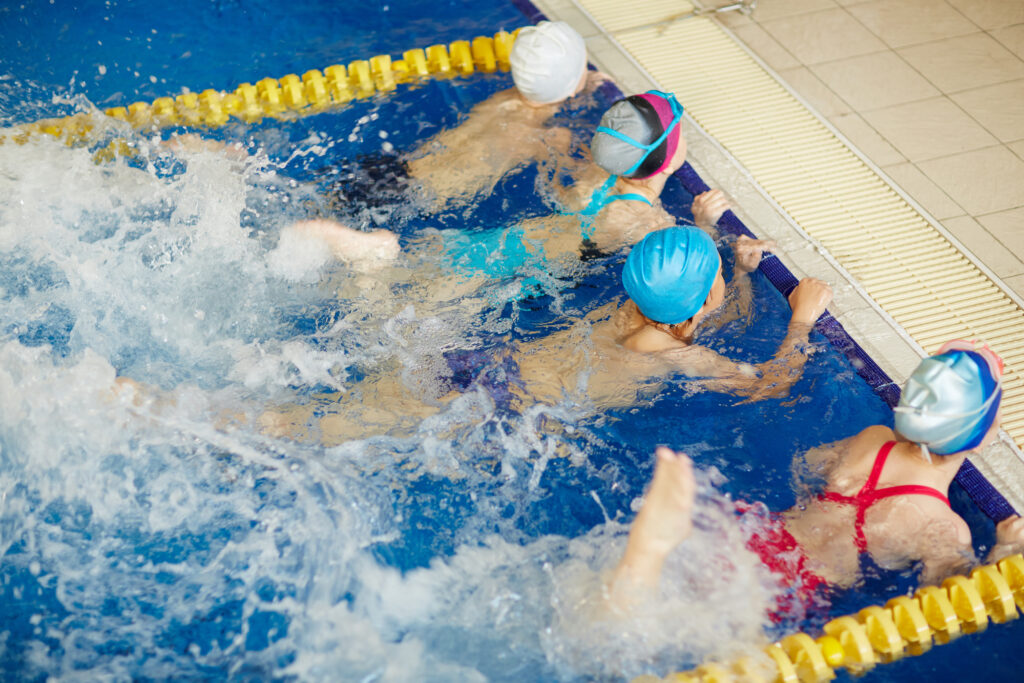
Challenges and Solutions
Infrastructure and Resources
One of the main challenges in implementing swimming in the national curriculum is the lack of infrastructure and resources. Many schools do not have access to a swimming pool, and those that do often struggle to maintain it. This makes it difficult for schools to provide regular swimming lessons to their students. Furthermore, the cost of maintaining a swimming pool can be prohibitive for many schools.
To address this challenge, we need to invest in the infrastructure and resources necessary to provide regular swimming lessons to all students. This could involve building new swimming pools or renovating existing ones. Additionally, we could explore alternative options such as using community swimming pools or partnering with local sports centres.
Training and Professional Development
Another challenge is the lack of training and professional development opportunities for teachers. Many teachers do not have the necessary qualifications or experience to teach swimming effectively. This can lead to inconsistent teaching standards and a lack of progress for students.
To address this challenge, we need to provide teachers with the training and professional development opportunities necessary to teach swimming effectively. This could involve providing funding for teachers to attend swimming instructor courses or partnering with local swimming clubs to provide training. Additionally, we could explore options for hiring dedicated swimming instructors to work with schools on a regular basis.
Overall, addressing these challenges will require a significant investment of resources and effort. However, the benefits of providing regular swimming lessons to all students are clear. By investing in the infrastructure, resources, and training necessary to make this a reality, we can ensure that all students have the opportunity to learn this valuable life skill.
Conclusion
In conclusion, we believe that swimming should be a bigger part of the national curriculum in the UK. Despite being an island nation, many children in the UK do not have access to swimming lessons or do not meet the required standards. This is a concerning issue that needs to be addressed.
Comparing the UK to other countries, we found that many countries place a higher emphasis on swimming education. In countries like Australia, swimming is a mandatory part of the curriculum, and children are required to take swimming lessons from a young age. In contrast, the UK only requires schools to provide swimming lessons in either Key Stage 1 or Key Stage 2.
We also found that there are many benefits to swimming education. Not only does it teach children a valuable life skill, but it also promotes physical fitness and can improve mental health. Furthermore, swimming education can also help reduce the risk of drowning, which is a leading cause of death in children.
Therefore, we believe that the UK government should take action to ensure that all children have access to quality swimming education. This could include increasing funding for swimming lessons, providing training for teachers, and making swimming a mandatory part of the curriculum. By doing so, we can help ensure that all children in the UK have the opportunity to learn how to swim and stay safe in the water.
Frequently Asked Questions
What is the current status of swimming in the UK national curriculum?
Swimming is currently a part of the national curriculum in the UK. The Department for Education states that by the end of Key Stage 2 (age 11), all children should be able to swim a minimum distance of 25 metres unaided. However, there is no requirement for schools to provide swimming lessons in Key Stage 1 (ages 5-7) or Key Stage 2 (ages 7-11). This means that not all schools offer swimming lessons, and not all children have access to swimming education.
What are the benefits of including swimming in the national curriculum?
Swimming is an important life skill that can improve physical health, mental wellbeing, and safety around water. Including swimming in the national curriculum would ensure that all children have access to this vital skill. Swimming can also improve overall fitness, coordination, and confidence in the water. Additionally, swimming is a low-impact exercise that can be enjoyed throughout life, making it a valuable lifelong skill.
How does the UK compare to other countries in terms of swimming education?
The UK lags behind other countries in terms of swimming education. For example, in Australia, swimming is a mandatory part of the national curriculum, and children are required to swim a distance of 25 metres by the end of primary school. In the US, many states require schools to provide swimming education, and some schools even have their own swimming pools. In comparison, the UK’s approach to swimming education is less consistent and less comprehensive.
What are the potential challenges of implementing swimming in the national curriculum?
One of the main challenges of implementing swimming in the national curriculum is the cost and availability of swimming facilities. Not all schools have access to swimming pools, and building new pools can be expensive. Additionally, there may be logistical challenges in terms of scheduling swimming lessons and providing adequate supervision. Finally, some children may be reluctant or afraid to participate in swimming lessons, which could impact their learning.
What are the safety considerations for including swimming in the national curriculum?
Safety is an important consideration when including swimming in the national curriculum. Schools must ensure that all swimming facilities are safe and meet relevant health and safety standards. Additionally, all swimming lessons should be supervised by qualified instructors who are trained in water safety. Schools should also have appropriate policies and procedures in place for dealing with emergencies and responding to incidents.
How can schools ensure that all students have access to swimming education?
Schools can ensure that all students have access to swimming education by providing swimming lessons as part of the national curriculum. This would ensure that all children have the opportunity to learn this important life skill. Additionally, schools can work with local swimming facilities to provide access to swimming lessons outside of school hours. Finally, schools can work with parents and carers to encourage children to participate in swimming lessons and ensure that they have the necessary equipment, such as swimwear and towels.

